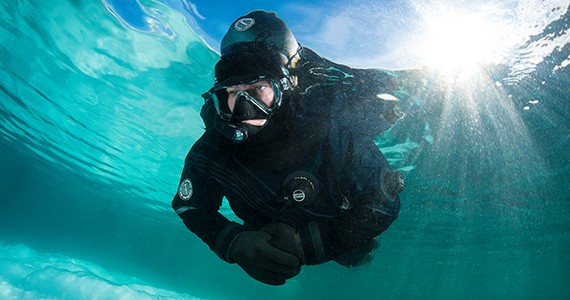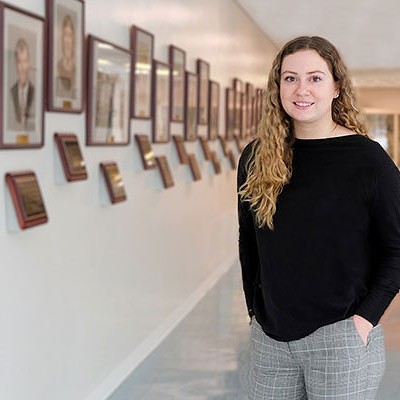Kitrina Godding
I'm bringing attention to climate change in the Arctic.
What drew you to the Marine Geomatics program at NSCC?
To take the program at NSCC you have to either be in the survey program at COGS, NSCC's Centre for Geographic Sciences, or have a preferred Bachelor's degree. I had just finished an undergrad in geology and geography at Saint Mary's University, but that wasn't a defined career. I went into Marine Geomatics because it was a way of gaining hands-on knowledge, and I enjoy studying anything related to the ocean.
What was participating in the program like?
The program was exactly what I wanted. Marine geomatics is mapping the ocean floor. You learn the background class work, but you also go to field school where you work hands-on with the equipment for the job you'll be doing. It's experience that's directly applicable to what I've done professionally.
You're a part of the all-female Sedna Epic Expedition Team. Can you tell me what it's like being part of this unique project?
The Sedna Epic Expedition is preparing to mount an epic snorkel relay of the Northwest Passage, during the summers of 2018 and 2019. The women I'm working with are awe-inspiring and extremely accomplished in the fields of ocean exploration, science, scuba diving, movie-making, photography and education. Our goal is to bring global attention to climate change in the Arctic, including disappearing sea ice and changes in the marine environment. We're also working with Inuit communities to deliver hands-on, experiential ocean education aimed at empowering young girls and women to tackle climate change and societal change in the Arctic.
What's it like working with the Inuit communities on the front lines of climate change?
I was part of Sedna's 2016 expedition to Nunavut, which followed the proof-of-concept expedition in 2014 to Labrador and Greenland. This past summer, we delivered our innovative Bringing the Ocean to Eye Level outreach program in Iqaluit, on Baffin Island. We set up mobile aquariums that temporarily housed local sea critters and we ran underwater robot-building workshops for youth. We learned that many Inuit are brought up to fear the water, likely because it's the leading cause of death in the Arctic. In the winter months, people fall through the ice while hunting and fishing. And in the summer months, people die in boating accidents. The Inuit generally don't swim, and many members of the community hadn't seen the sea life in Frobisher Bay or in their backyard, so to speak.
Sedna's scientific dive team collected species of small fishes and invertebrates for the aquariums, enabling children and elders to observe these critters for the first time. Taking the concept of "bringing the ocean to eye level" one step further, Sedna's sea women mentored 10 Inuit and northern girls and young women, leading them on snorkel safaris in Frobisher Bay. It's been an amazing experience, and I look forward to returning to the Arctic in the summer of 2018.












